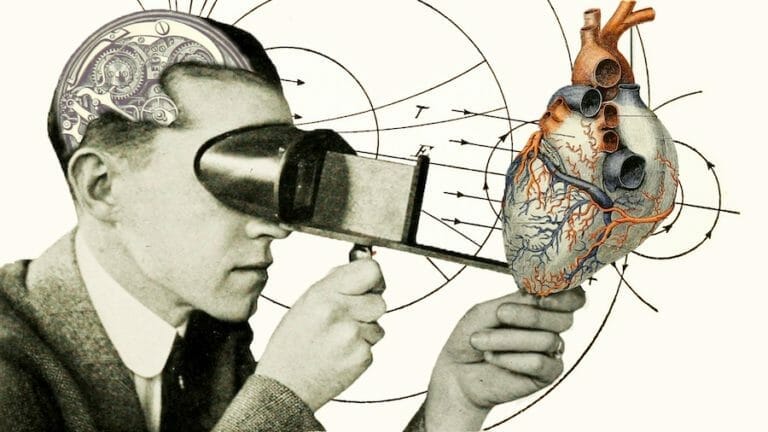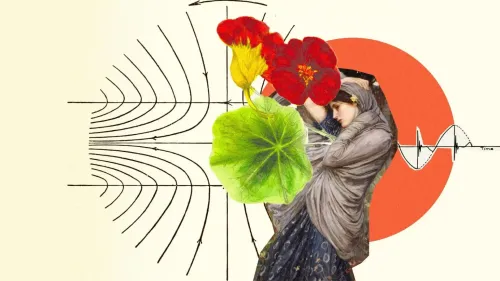A friend told once told me we don’t spend enough time with ourselves. If we’re not staring at a screen, we’re spending time with friends. If we’re not socializing, we’re finding ways to be productive, whether running errands, clearing our home, or looking after others. “Meditate for 20 minutes a day. It’s the least you could do for your heart,” she shared. “And if that seems too difficult, imagine not giving your loved ones 20 minutes of your time. Then, how would your relationships evolve?”
As an avid practitioner in meditation, I reflected on both the gifts and challenges I have and continue to meet. Sure, getting a massage is a nice treat, but how can we truly get to know ourselves if we don’t spend real quality time with everything that makes us who we are? While meditation has surged in popularity over the past decades, it has also taken on a few common misconceptions. The more we can demystify meditation and strip it down beyond a trend, the freer we become and the fewer walls we put up. Whether you’ve been meaning to meditate or are just peering into this practice, my wish is that this information assists in guiding you back to yourself.
What is meditation?
From my experience, meditation isn’t about tightly gripping to a goal or becoming perfect. For me, meditation has been a practice that allows me to connect with a focal point and direct my attention through intention. Yes. It’s more about listening rather than pushing away unwanted thoughts. It’s the ability to be gentle with myself in a world that can often feel so demanding.
When someone asks me about meditation, they list all excuses why they can’t give themselves the time, the difficulties they’ll face, and that it’s just not for them. I get it. I used to make excuses why I didn’t deserve to have great things until I got tired of playing the same script over and over. The point is if we want something to be difficult, it will be impossible. I’m here to remind you that it doesn’t have to be.

Wanna use this illustration on your website? Choose from 100s of our artworks and follow the guidelines 😀
How can you start practicing meditation?
Start now and refine as you go. If you wait for the perfect moment, it’ll never come, and if you’re reading this, I have a great nudge you are feeling the call. This meditation is an excellent entryway for beginners and can be expanded upon as you regularly continue.
- Sit comfortably with an upright spine-shoulders over hips and head over shoulders.
- Take in three deep breaths through the nose and exhale through the mouth. Allow any utterances of sounds to come through. These introductory breaths are bringing you into your body. Notice any areas that feel tense and see how you can direct your breath.
- Direct your focus. I prefer to close my eyes and direct my inner vision to the area right between my eyebrows. If you are keeping your eyes open, try to gaze at the tip of your nose.
- Set an intention for your practice. Remember, this is sacred YOU time. An intention you can set is to be gentle with yourself.
- Do a body scan. Start at your feet and release any tension you may be holding. Continue through your shins, thighs, hips, abdomen, chest, arms, neck, and head. Return to your intention if you feel you are forcing deep breaths or are flooded with thoughts. Trust you are right where you need to be.
- After scanning your physical body, allow your breathing to return to a normal setting and receive the calmness you have just given yourself. You can also have your hands placed on your lap face up to receive or face down to let go. Follow what you feel your energetic body is asking for.
When first starting, you can set a timer for two to three minutes and continue this way for as long you wish. I recommend two to four weeks. Allow the ritual to solidify and increase once you feel ready. Remember, you don’t need to meditate for two hours a day to do it “right.” This isn’t a race and this practice isn’t about being perfect.

Is there science behind meditation’s health benefits?
The science behind meditation offers valuable insights as to what happens to the body when we tune in. Studies show a range of benefits surrounding stress reduction, depression, irritable bowel syndrome, better sleep and anxiety, to name a few.
However, just like language, meditation is a living entity. If we speak words of compassion, we co-create a harmonious reality. This is a similar truth when looking at meditation as either a tool or a crutch. While recent science proves the health benefits of this practice, I must also remind you that meditation is best practiced with an intention, not an expectation.
What should I think about when meditating?
The mind is built to solve and compartmentalize so thoughts will naturally come. There is nothing to think about, and this is where a common misconception often arises.
When a thought comes up, there is no need to fight or run from it. This resistance may only make the thought return in other ways. Besides, if a particular thought is coming up for you in meditation, then this is the time to allow it be. Think about it. We go about our days with numerous distractions thrown our way. Rarely do we get the opportunity to sit and listen. Of course, this doesn’t mean to cling to the thought either. Allow yourself to observe the thought, free from judgment. When you feel called back to your breath and intention, reconnect and be in the space, you have just allowed to expand. As your daily meditation practice continues and evolves so will your response to passing thoughts, bodily discomforts, and external noises.

Different Styles of Meditation
Mindfulness Meditation
This mindfulness practice has been the starting point for many beginners in the western world-mainly because it is relatively simple and doesn’t require access to a teacher once the basic principles are established. While its surge in popularity over the western world may have been exploited by consumerism, the practice continues to be a source of serenity amidst a buzzing society that helps raise awareness on how to slow down and live from a space of presence.

Wanna use this illustration on your website? Choose from 100s of our artworks and follow the guidelines 😀
Guided Meditation
For targeted inner work, guided meditations are helpful tools to work on specific areas, including the chakras, manifestation, womb healing, and so on. These meditations lead the listener through the breath and guided imagery to access deeper parts of the self, higher aspects of our potential, and connection with divine energy. Again, there are many options available online or you might choose to work with a teacher one-on-one at a meditation class.

Mantra Meditation
Just as the breath can be a vital focal point, so can mantra. Mantra meditation is a practice that utilizes the power of the voice and intention to deepen the connection with the universe. In my kundalini practice, I sometimes repeat, ‘Sat Nam.’ Sat translates to truth and Nam to identity. Depending on what resonates, you might choose a traditional mantra to work with or select one of your own. The purpose is to create a focal point. When I practice mantra meditation, I also like to close my eyes and direct my inner vision to the space between my brows.

These are but a few of the many styles and approaches toward meditation that can assist you in personal development, cosmic connection, and inner healing. Other popular techniques include the loving kindness meditation and Buddhist meditation. Whether you feel called to mantra meditation or listening to guided recordings, I commend you for carving out the space to honor yourself and sit through the discomfort as you recognize the bliss within. I’ve been meditating for almost ten years and consider myself to be a beginner. Some of my meditations bring me deep insight and inner calm, while others leave me scrambling through thoughts. Whatever you face, remember it is all welcome, and every breath is an opportunity to receive and let go. So what are you deciding to take in and offer?
